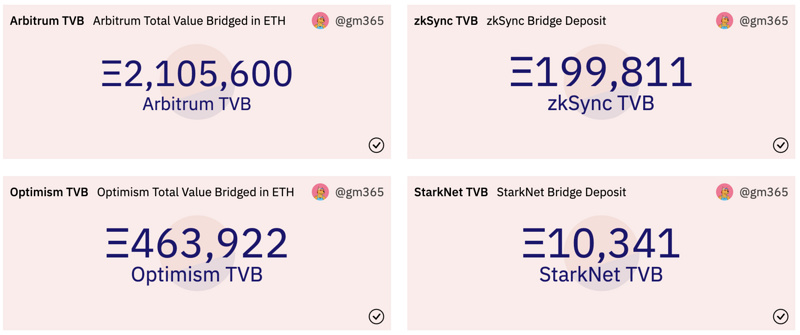The maximum daily increase is 20%. Can Shibarium lead SHIB into the Layer 2 track?
Author: Loopy Lu, ODAILY Planet Daily
Recently, the market has warmed up. Local hotspots have begun to emerge, and SHIB has achieved an approximate 20% increase in a single day. Not only that, but the tokens in the SHIB ecosystem have also seen considerable gains, with BONE and LEASH prices rising rapidly. The recent increase in the SHIB ecosystem had already shown signs a few days ago.
On January 16, the Shiba Inu official announced the upcoming launch of the Beta version of the Ethereum Layer 2 solution, Shibarium.
The entry of meme coins into the Layer 2 space, which is more foundational, is quite interesting. Can the currently popular Layer 2 lead SHIB to complete its transformation away from being just a meme?
Meme Starts "Doing Work," Where Is the Project Heading?
As the oldest meme coin, DOGE has spawned a Layer 1 chain named DogeChain.
DogeChain's origins are not "orthodox"; the chain was developed by community members and did not receive recognition from the Doge community. The Doge community even issued a statement mocking the project as a "knockoff." However, leveraging Doge's strong popularity and influence, this project briefly ignited investor enthusiasm during its early launch in a bear market, with TVL reaching as high as $23 million.
SHIB, however, is different. Shibarium is officially announced by SHIB, eliminating concerns about "impostors," and it can better harness the power of the SHIB community.
Of greater concern to investors is the gas token, BONE has been chosen by the development team as the token for gas payments and validator voting. BONE has a total supply of 230 million, of which 20 million is reserved for rewarding validators and delegators in the coming years.
BONE is not a new token. As early as 2021, SHIB launched ShibaSwap. This move also introduced people to the SHIB team's interesting style of "meme doing work." Subsequently, the SHIB ecosystem saw the emergence of LEASH and BONE tokens. From its inception, BONE was designated as the governance token of Doggy DAO.
When we turn our attention back to the project itself, perhaps the project's fundamentals are a more noteworthy issue.
What Is Shibarium?
According to the official documentation, Shibarium is a Layer 2 solution that can serve areas such as the metaverse, web3 innovations, and gaming, providing Ethereum with faster transaction times, lower fees, and a scalable development framework. The Shibarium network will utilize SHIB ecosystem tokens (SHIB, LEASH, BONE).
Unlike the currently popular PoS consensus, Shibarium adopts a DPoS (Delegated Proof of Stake) consensus. In this consensus mechanism, not all network participants can validate transactions and create blocks; instead, a selected group of validators is chosen through a voting process. Individual users can delegate their voting rights to the validators of their choice.
Validators must stake a certain amount of BONE to become validators. Validators then use the combined voting power of all delegators to help secure the network and handle validation tasks.
The SHIB team believes that this mechanism is more effective than PoW and PoS.
It is worth noting that although the gas token is designed as BONE, every transaction executed on Shibarium will burn a certain amount of SHIB. However, the specific mechanism and amount of the burn have yet to be determined.
How Far Can SHIB Go in the "Explosive" Layer 2?
With the arrival of the Ethereum Shanghai upgrade, the issue of Ethereum scaling has once again returned to the market's focus. After years of development, while the Layer 2 track is still rapidly changing, the market landscape has begun to take shape.
From a technical perspective, there are currently five main routes for Layer 2: state channels, plasma sidechains, sidechains, rollups, and Validium. Currently, prominent Layer 2 projects include Optimism, Arbitrum, zkSync, Polygon, etc., all of which have built relatively rich ecosystems.
Regardless of the technical route adopted, Layer 2 is a complex field that tests the technical capabilities of the team. However, when we look back at SHIB, it is difficult to see optimistic information.
According to information disclosed on the official blog, it is hard to see which route Shibarium has adopted for scaling, what innovative technologies have been developed, or what technical papers have been published. Is the SHIB team's technical reserve sufficient to support a complete, secure, and user-friendly Layer 2 scaling solution? In terms of transparency and disclosure, Shibarium may lag far behind its competitors.
Moreover, the team has not provided a specific timeline for the release. For all questions related to the timeline of technical implementation, the team's responses have been vague, simply stating "soon."

Dune data shows that the total recharge of the four major Layer 2 bridges is approximately 2.77 million ETH, equivalent to about $4.2 billion. In comparison, ShibaSwap's $33 million TVL pales in comparison. The urgency to occupy a "higher" ecological position may also be one of the reasons SHIB is attempting to enter the Layer 2 space.
Meme or dog-themed projects, through popularity, specific community culture, high exposure, and maintaining presence, may bring short-term funding and liquidity to the project. However, such projects are easy to launch, have low maintenance costs, and can maintain themselves with minimal effort due to high community autonomy. However, the "golden period" of these projects is not long, and they are not a good choice for speculation, let alone an all-in option.
Here, we remind investors that compared to project tokens, the operation of Layer 2 requires stronger technical capabilities, long-term development and maintenance, and ecological support. If it relies solely on publicity to attract attention, there may be significant risks.










